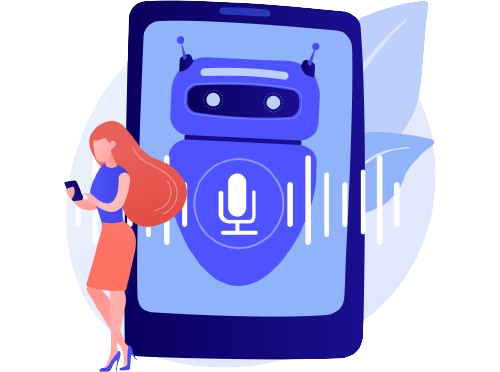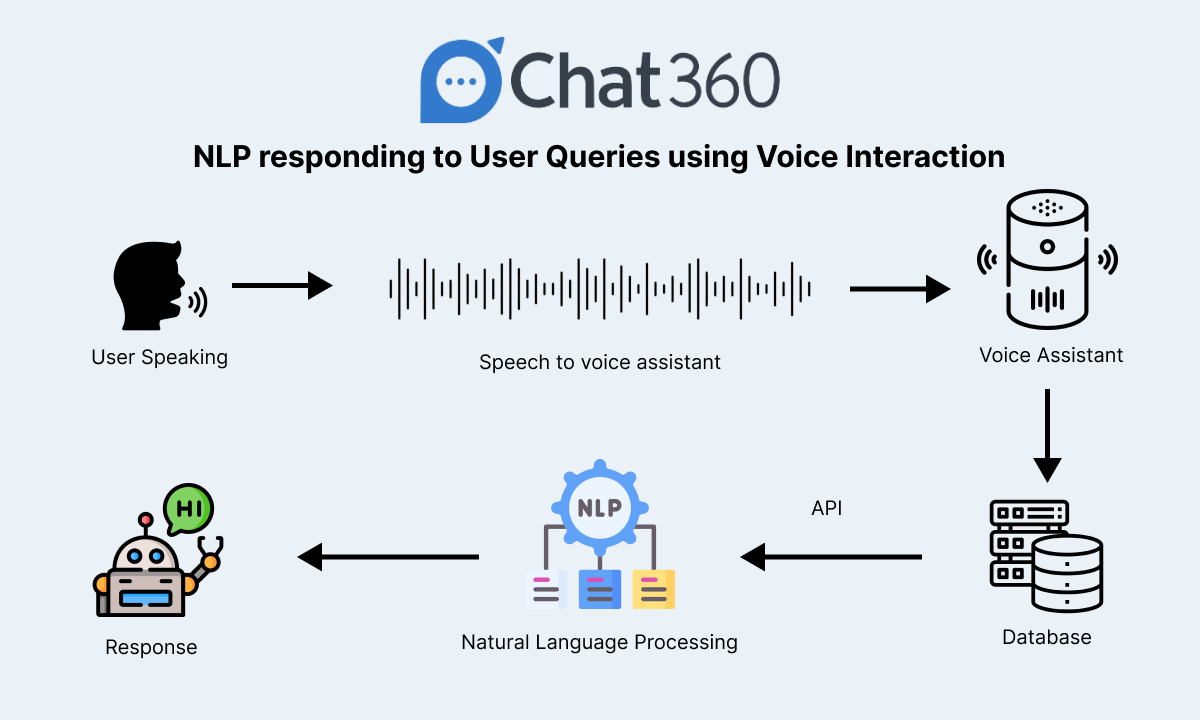All Blogs
How NLP is Applied to Process and Comprehend Natural Language in Voice Interactions
- Shivam Verma
- 1 March 2024

This comprehensive exploration delves into the transformative role of Natural Language Processing (NLP) in voice interactions.
We will deep dive into understanding NLP’s, its core functionalities, working, examples and the diverse applications of NLP and its pivotal role in processing and comprehending natural language with a detailed breakdown of NLP’s intricate workings.
Highlighting its significance in voice interactions. Industry examples showcase the integration of NLP by leading companies, emphasizing its impact on user experience.
What Is Natural Language Processing (NLP)?
Natural Language Processing (NLP) is a branch of artificial intelligence (AI) that focuses on the interaction between computers and humans using natural language. Essentially, it empowers machines to understand, interpret, and generate human-like text, enabling seamless communication between humans and computers. NLP encompasses a wide range of tasks, including language translation, sentiment analysis, and, crucially, voice interactions.

What Is NLP Used For?
NLP has become a cornerstone in various applications across industries due to its ability to process and understand natural language. The applications of NLP are extensive, and they bring numerous benefits to different sectors. Some of the key uses and benefits include:
1. Voice Assistants: NLP is integral to the development of voice-activated virtual assistants, such as Siri, Alexa, and Google Assistant. These assistants use NLP to comprehend and respond to spoken commands, providing users with hands-free interaction.
2. Chatbots: NLP is employed in chatbots to engage in natural language conversations with users. This application is widespread in customer support, enhancing user experience by addressing queries and providing information in a conversational manner.
3. Sentiment Analysis: NLP is employed to analyze and understand the sentiment behind textual data, such as social media posts or customer reviews. This allows businesses to gauge public opinion and respond accordingly.
4. Language Translation: NLP powers language translation services, breaking down language barriers by automatically translating text from one language to another. This is invaluable in a globalized world, facilitating communication between people who speak different languages.
5. Information Extraction: NLP enables the extraction of valuable information from unstructured data, making it easier to process large volumes of textual data and derive meaningful insights.
How Does Natural Language Processing Work?
The process of NLP involves several steps, each contributing to the machine’s understanding and generation of human-like text. The key steps in NLP include:
1. Tokenization: The text is broken down into smaller units, or tokens, such as words or phrases.
2. Part-of-Speech Tagging: Each token is assigned a specific part-of-speech tag, such as noun, verb, or adjective.
3. Parsing: The relationships between the tokens are analyzed to create a hierarchical structure, representing the syntactic relationships within the text.
4. Named Entity Recognition (NER): This step involves identifying and classifying entities, such as names of people, places, organizations, etc.
5. Sentiment Analysis: The overall sentiment or emotional tone of the text is determined, categorizing it as positive, negative, or neutral.
6. Machine Translation: In the case of language translation, NLP algorithms work to understand the meaning of the text in one language and generate equivalent text in another language.
How NLP is Applied to Process and Comprehend Natural Language in Voice Interactions
NLP plays a crucial role in transforming spoken language into actionable insights for machines. It can be used in various Business and Personal applications.
We will deep dive into the applications of NLP in voice interactions below:
1. Speech Recognition: NLP algorithms are employed to convert spoken words into text. This involves understanding the phonetic components of speech and mapping them to corresponding written words.
2. Intent Recognition: NLP identifies the user’s intent behind the spoken words. This step is vital in determining what action the machine needs to take based on the user’s input.
3. Context Understanding: NLP helps machines understand the context of the conversation, allowing for more natural and contextually relevant interactions. This involves considering the previous user inputs to provide coherent responses.
4. Response Generation: Once the intent and context are understood, NLP generates a human-like response. This involves not only providing relevant information but also maintaining a conversational tone for a more engaging user experience.
5. Continuous Learning: NLP systems are designed to continuously learn and improve based on user interactions. This adaptive learning process enhances the system’s ability to comprehend diverse language nuances and evolving user preferences.
Industry Examples of Companies Using NLP in Voice Interactions
Several industry leaders have successfully implemented NLP in voice interactions, enhancing user experiences and efficiency. Some notable examples include:
1. Amazon: Amazon’s Alexa, powered by NLP, is a prime example of a voice-activated virtual assistant. Users can interact with Alexa through natural language commands, enabling tasks ranging from setting reminders to controlling smart home devices.
2. Google: Google Assistant utilizes NLP to understand and respond to voice commands across various devices. Its ability to comprehend context and provide relevant information showcases the power of NLP in voice interactions.
3. Apple: Siri, Apple’s virtual assistant, leverages NLP to interpret and respond to spoken queries and commands. Siri’s integration across Apple devices demonstrates how NLP facilitates seamless interactions in a multi-device ecosystem.
4. Microsoft: Microsoft’s Cortana employs NLP to assist users with voice commands, offering a range of functionalities from scheduling appointments to providing weather updates.
Revolutionizing Business Communication with NLP-Powered Chatbots
Chat360, a leading chatbot provider for businesses, leverages NLP to offer seamless communication through chatbots across multiple platforms, including WhatsApp, Instagram, Facebook, websites, and CRM platforms.
Here’s how Chat360 can empower businesses with effective communication:
1. Multichannel Integration: Chat360’s chatbots can seamlessly integrate with various communication channels, ensuring that businesses can engage with their audience wherever they are, whether on social media or their official website.
2. Contextual Understanding: By incorporating advanced NLP capabilities, Chat360’s chatbots understand the context of user queries, enabling more natural and relevant interactions. This contextual understanding ensures a personalized and engaging user experience.
3. Automated Customer Support: Businesses can utilize Chat360’s chatbots to automate customer support processes. The NLP algorithms enable the chatbots to comprehend user issues, provide relevant information, and even escalate complex queries to human support if necessary.
4. Lead Generation: NLP-powered chatbots can assist in lead generation by engaging with potential customers in a conversational manner. By understanding user intent and providing valuable information, these chatbots contribute to the conversion of leads into customers.
5. Data Insights: Chat360’s NLP capabilities extend to extracting valuable insights from user interactions. Businesses can gain a deeper understanding of customer preferences, sentiments, and frequently asked questions, allowing for data-driven decision-making.
NLP is a transformative technology that has revolutionized voice interactions, making them more natural, intuitive, and user-friendly. As businesses increasingly recognize the potential of NLP, the integration of this technology, as exemplified by Chat360, becomes crucial for staying competitive and delivering exceptional communication experiences. The marriage of NLP and voice interactions continues to pave the way for a future where human-machine communication is seamless and effortless.
Schedule a free demo today!